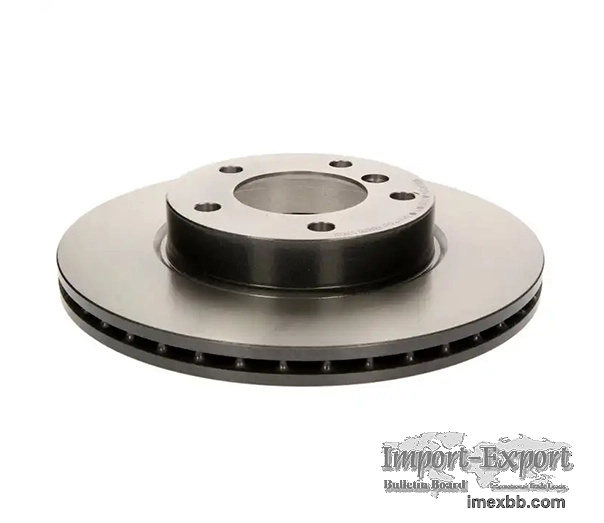 |
 |
Home > Offers to Sell > Electronics & Electrical > Batteries > Auto Batteries
| Contact: | Qllino |
|---|---|
| Company: | Qllino Automotive Industrial Limited |
| Yatai RD, Xiaoshan Dist. Hangzhou, China. | |
| Hangzhou | |
| China | |
| Phone: | 86-571 82789568 |
| E-Mail: | |
| Date/Time: | 2/29/24 6:05 GMT |
Brake Discs
A auto brake disc, also known as a auto brake rotor, is a circular component
attached to a vehicle's wheel hub, providing you with the reliability and
confidence you need on the road. When the brake pads clamp onto its surface,
friction is generated, converting kinetic energy into heat to slow down or stop
the vehicle. It plays a crucial role in modern disc brake systems.
Types of Custom Brake Discs
QBD001 Front Brake Disc
QBD002 Front Axle Brake Disc
QBD003 Front Axle Brake Disc
QBD004 Rear Axle Brake Disc
QBD005 Front Axle Brake Disc
QBD006 Front Axle Brake Disc
QBD007 Front Brake Disc
QBD008 Rear Brake Disc
QBD009 Front Brake Disc
QBD010 Front Brake Disc
QBD011 Rear Brake Disc
QBD012 Front Brake Disc
QBD013 Rear Brake Disc
QBD014 Front Brake Disc
QBD015 Front Brake Disc
QBD016 Front Brake Disc
QBD017 Front Brake Disc
QBD018 Rear Brake Disc
QBD019 Rear Brake Disc
QBD020 Front Brake Disc
Brake Disc Function
The auto brake disc china, also known as an auto brake rotor, plays a critical
role in the braking system of a vehicle. Its main function is to provide a
surface for the brake pads to grip onto and generate friction, which ultimately
slows down or stops the rotation of the wheel.
When the brake pedal is pressed, hydraulic pressure is applied to the brake
caliper, which in turn, causes the brake pads to clamp down on the brake disc
quality. As the rotating disc is squeezed between the brake pads, friction is
generated. This friction converts the kinetic energy of the rotating wheel into
heat energy.
The disk brake rotor is designed to handle and dissipate this heat efficiently
to prevent brake fade and maintain consistent braking performance. Brake discs
are typically made of cast iron, as it has excellent heat absorption and
dissipation properties. Some high-performance vehicles may use carbon-ceramic
disc brake parts, which offer even better heat resistance and weight reduction.
By converting the kinetic energy into heat energy, the high-performance brake
rotors and braking system slow down or stop the vehicle effectively. The brake
disc's design, material quality, and proper maintenance are crucial to ensure
its durability, effective friction, and overall braking system performance.
Brake Disc Material
Car brake discs, also known as rotors, are typically made from several
different types of materials by auto brake manufacturers, each with its own
characteristics and advantages. The most common materials used for custom-made
brake discs include:
1. Cast Iron: Cast iron is the most widely used material for brake discs. It
offers excellent heat absorption and dissipation properties, making it suitable
for various driving conditions. Cast iron discs are relatively affordable and
provide good overall braking performance.
2. Carbon Steel: Carbon steel discs are designed to be lightweight and have
better heat resistance compared to standard cast iron discs. They offer
improved performance under high-temperature conditions and reduce unsprung
weight, enhancing overall vehicle handling.
3. Composite Materials: Composite brake discs combine different materials to
offer superior heat resistance, weight reduction, and performance. One common
composite material is carbon-ceramic, which consists of a carbon fiber matrix
and ceramic particles. Carbon-ceramic discs are expensive but highly effective
in extreme driving conditions, such as high-performance or racing vehicles.
They provide excellent heat resistance, reduce brake fade, and have a longer
lifespan compared to cast iron or carbon steel discs.
The choice of brake disc material depends on factors such as the type of
vehicle, driving style, and intended use. Passenger cars and standard vehicles
often use cast iron discs, while performance vehicles may opt for carbon steel
or carbon ceramic discs to improve braking performance and reduce weight. It's
essential to consider the specific requirements and recommendations of the
vehicle manufacturer when selecting the appropriate brake disc material.
Auto Brake Disc Components
Rotor Surface:
The friction surface where auto brake pads make contact, generating friction to
slow down the vehicle.
Ventilation Vanes:
Channels within the auto brake rotor that promote heat dissipation, preventing
brake fade during heavy use.
Minimum Order: 1 pieces
SOURCE: Import-Export Bulletin Board (https://www.imexbb.com/)
Similar Products:Not exactly what you are looking for? Post an Offer to Buy!
![]()
© 1996-2010 IMEXBB.com. All rights reserved.
|
|
|






